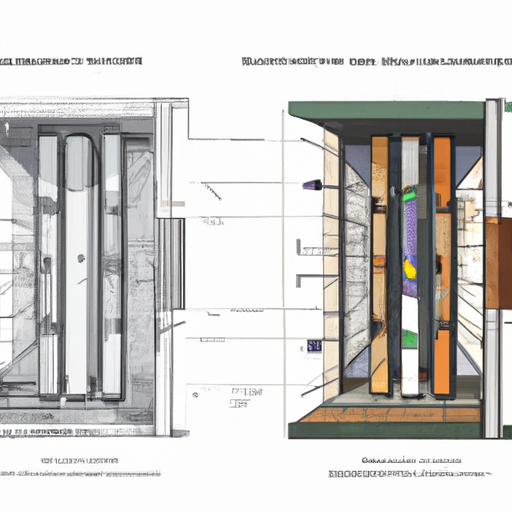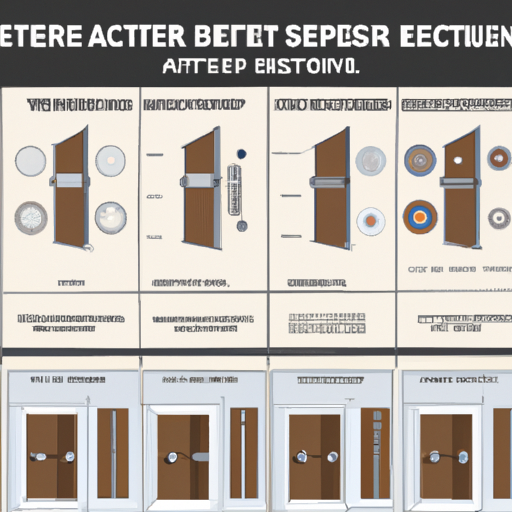Our world is becoming increasingly security conscious and this has led to the rise in demand for bullet proof doors. This blog post provides an in-depth analysis of bullet proof doors, discussing their design, construction, and benefits, as well as the industries they serve. We'll also take a look at how they're tested and certified. Whether you're a business owner, a safety officer, or a concerned homeowner, this comprehensive guide is designed to answer all your questions about bullet proof doors.
Understanding the Basics: What are Bullet Proof Doors?
Bullet proof doors, also known as ballistic doors, are specialized doors designed to provide enhanced security and protection against ballistic threats. These doors are specifically engineered to withstand the impact of bullets and other high-velocity projectiles, making them an essential component in high-security environments such as government buildings, banks, embassies, and even residential properties of high-profile individuals.
Bullet proof doors are constructed using a combination of durable materials and innovative design techniques to ensure maximum resistance against attacks. These doors are typically made from steel, aluminum, or a composite of both, and are reinforced with layers of ballistic-grade materials such as Kevlar or bullet-resistant glass. The thickness and composition of the door can vary depending on the desired level of protection.
In addition to their bullet-resistant properties, these doors are also designed to offer other security features such as fire resistance, sound insulation, and even blast resistance in some cases. This makes them a comprehensive solution for safeguarding not only against ballistic threats but also other potential hazards.
The installation of bullet proof doors is a complex process that requires expertise and precision. It involves meticulous planning, including considerations such as the location, purpose, and desired level of protection. Proper installation ensures that the door operates seamlessly and provides the highest level of security.

An image showing the internal structure of a bullet proof door, displaying various layers of protective materials.
Materials and Construction: What Makes a Door Bullet Proof?
When it comes to the construction of bullet proof doors, the materials used play a critical role in determining their level of protection. Steel is a popular choice due to its strength and durability. It can be reinforced with additional layers of ballistic materials such as Kevlar or bullet-resistant glass to enhance its resistance against projectiles. Aluminum is another commonly used material, known for its lightweight properties and corrosion resistance.
The construction of a bullet proof door involves multiple layers of materials strategically combined to create a strong barrier against ballistic threats. These layers may include steel plates, ballistic fabric, and bullet-resistant glass. The thickness and composition of each layer are carefully chosen to achieve the desired level of protection.
The door frame is also an important component in the construction of bullet proof doors. It needs to be robust and securely anchored to the surrounding structure to prevent any forced entry. Reinforced hinges and locking mechanisms further enhance the overall security of the door.
In addition to the materials used, the design and manufacturing process also contribute to the effectiveness of bullet proof doors. Advanced techniques such as welding, laminating, and bonding are employed to ensure the integrity and strength of the door. Quality control measures are implemented to guarantee that each door meets the necessary standards and specifications.
Are All Bullet Proof Doors Created Equally? Understanding Certification and Testing
Not all bullet proof doors are created equally, and it is crucial to understand the certification and testing process to ensure you are investing in a reliable product. Certification provides an assurance that the door has undergone rigorous testing and meets specific standards for ballistic resistance. The most recognized certification for bullet proof doors is the UL (Underwriters Laboratories) rating.
UL certification involves subjecting the door to various tests, including ballistic resistance, forced entry, and fire resistance. The door is evaluated based on its ability to withstand different levels of ballistic threats, such as bullets from handguns or rifles. The certification also takes into account the door's resistance against impact, including blunt force attacks and explosions.
During testing, the doors are assessed for their resistance to penetration, deformation, and spalling (the release of fragments upon impact). The door's ability to maintain its structural integrity and protect against common types of ammunition is thoroughly examined. Additionally, the framing, hinges, and locks are also assessed for their durability and effectiveness.
It is essential to verify that the bullet proof door you are considering has the appropriate certification for your specific security needs. Different levels of UL certification indicate varying degrees of protection, so understanding the specific rating required for your environment is crucial. Consulting with security experts or reputable manufacturers can help you determine the appropriate certification for your needs.

An infographic explaining the different certification levels for bullet proof doors and the types of firearms they can resist.
"Safety is as simple as ABC: Always Be Careful." – The Industries Benefitting from Bullet Proof Doors
Bullet proof doors have become a necessity in various industries where safety and security are paramount. One industry that greatly benefits from these doors is the banking sector. Banks handle large amounts of cash and are at a higher risk of armed robberies. Bullet proof doors provide an additional layer of protection, ensuring the safety of employees and customers in case of an attempted robbery.
Government facilities and law enforcement agencies also rely on bullet proof doors to safeguard their premises. These establishments often store sensitive information and valuable assets that require top-notch security. Bullet proof doors help prevent unauthorized access and protect against potential threats, providing peace of mind to those working in these high-security environments.
The hospitality industry, including hotels and resorts, is another sector that benefits from bullet proof doors. These establishments strive to provide a safe and secure environment for their guests. Bullet proof doors installed in key areas such as entrances, back offices, and security rooms enhance the overall security measures, ensuring the safety of guests and staff.
Schools and educational institutions have also recognized the importance of bullet proof doors in ensuring the safety of students and staff. In light of recent tragic events, schools are taking proactive measures to protect against potential threats. Bullet proof doors can be installed in classrooms, administrative offices, and other vulnerable areas, providing a secure environment for learning and reducing the risk of harm.
Bullet Proof Doors: A Comprehensive Guide:
| Type | Construction | Thickness | Weight |
|---|---|---|---|
| Steel | Multi-layer | 20 mm | 450 kg |
| Aluminium | Single-layer | 12 mm | 100 kg |
| Composite | Multi-layer | 10 mm | 200 kg |
| Titanium | Single-layer | 30 mm | 700 kg |
Bullet proof doors are more than just a security feature; they're a statement of your commitment to safety. While they may require a more significant investment than traditional doors, their benefits far outweigh the costs. They provide peace of mind, protection against potential threats, and can even save lives in extreme situations. As we've seen, the process of purchasing and installing these doors can be complex, but understanding their structure, the materials used, and the testing process can help make the decision easier. Remember, when it comes to security, it's always better to be safe than sorry.